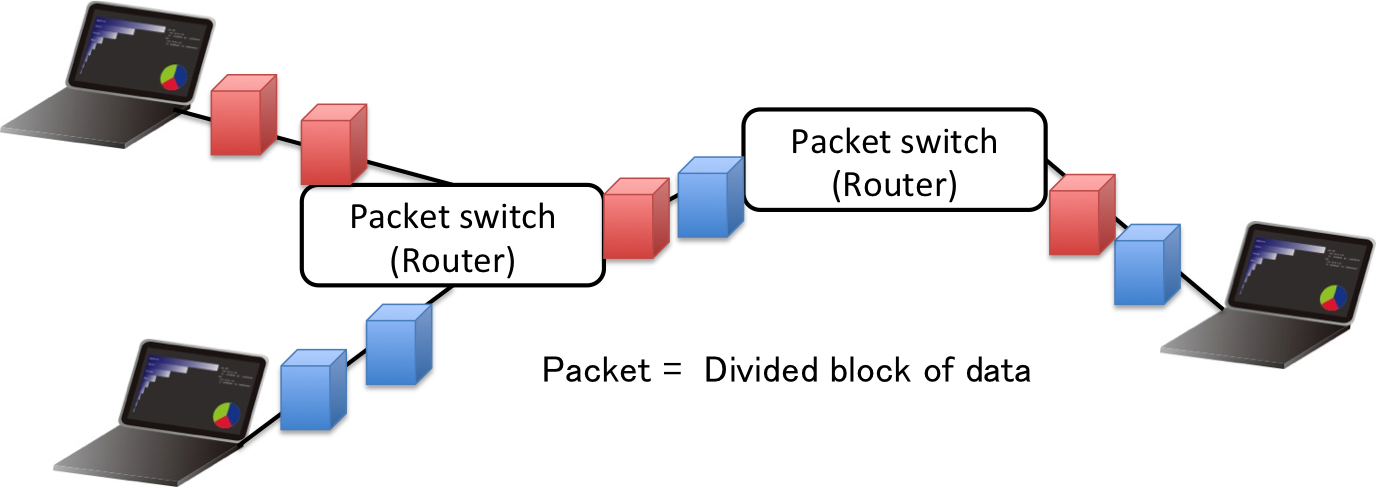
In this page, I summerize the introduction to the Internet architecture and the relevant network engineering technologies as well as the fundamental technologies to cloud computing.
The Internet is a world-wide scale data communication network whose subscriptions account for 32 billion people in the world in 2015 according to a report from International Telecommunication Union (ITU). The Internet named for “inter-network”, meaning that a network of networks. A network is comprised of a graph (i.e., vertices (nodes) and edges (links)) and flows on the graph, as illustrate in Figure 1.

The Internet consists of thousands of networks, called autonomous systems (ASes), operated by various organizations such as Internet Service Providers (ISPs), companies, and universities. Each AS represents an administrative domain with its operational policy.
A large scale telecommunication network of an early date before the Internet was developed is the “telephone network”. In the telephone network, communication channels are established by circuit switching, which creates a dedicated path between two endnodes as illustrated in Figure 2. Thus, circuit switching requires a sufficient number of links in the network to establish any requested paths. Otherwise, some coming calls would fail when the network is congested. In contrast, the Internet adopts packet switching for the communication between any two endnodes. Packet switching does not establish paths between communicating endnodes. Instead, in packet switching, a data unit of applications (e.g., file) is divided into small chunks of data, called packets, and each intermediate node (i.e., router in the Internet) forwards the packets hop by hop to the destination according to the header information in a packet followed by a data chunk called payload. Packet switching allows sharing the links with other end-to-end communications. Thus, packet switching efficiently utilizes the link resources. Since the links are shared in packet switching, it provides a best-effort service while circuit switching does a guaranteed service.


The Internet is designed to interconnect computer systems. “Protocols” that govern the semantics between interconnected telecommunication functions are defined for interoperability.

Other fundamentals are explained with slides.